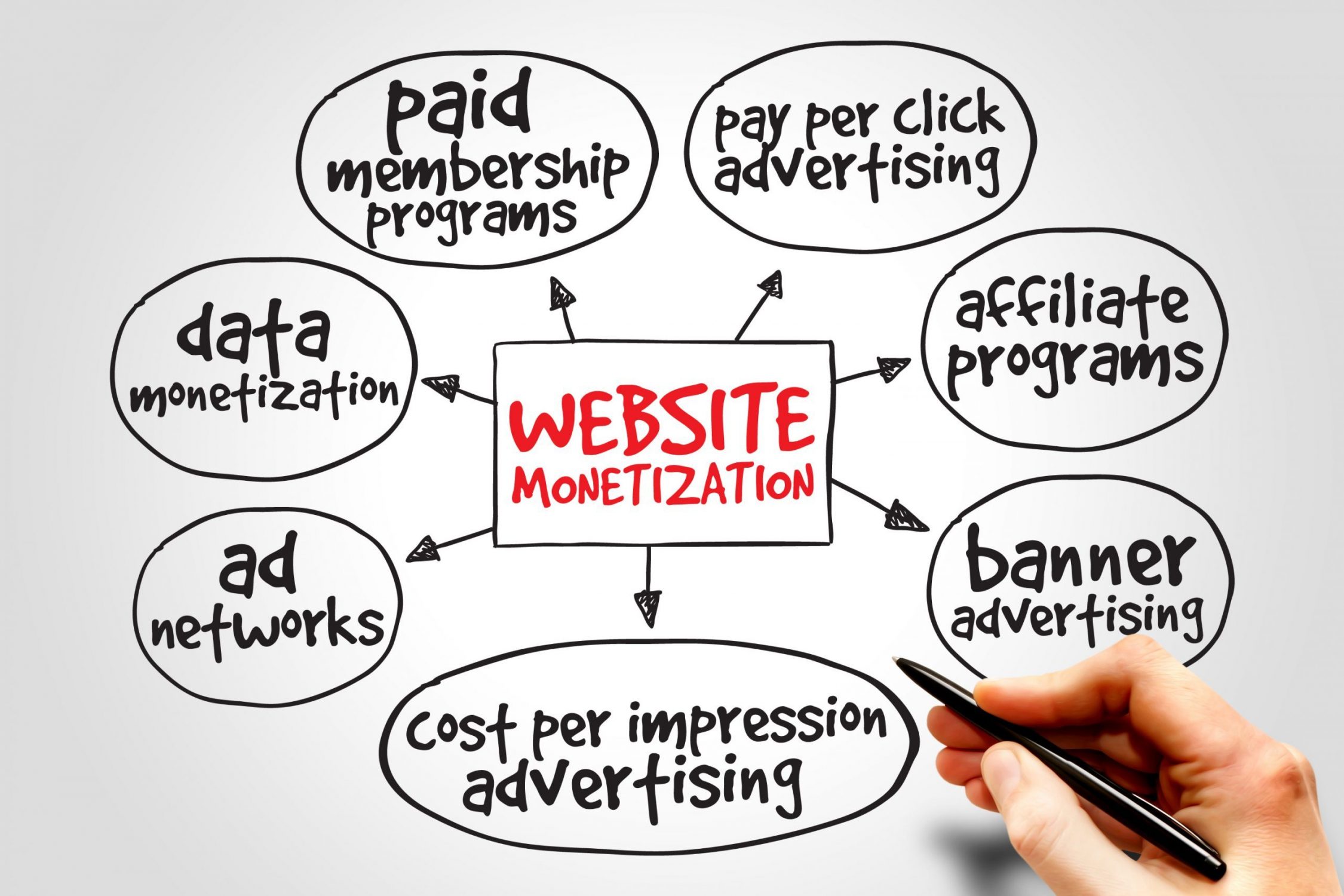
Got Banned? Google Ads And Your Merchant Account
Nov 6, 2020 7 minute read
Are Google Ads your main source of traffic? Read on to determine how that can spell trouble for your online business and merchant account
The digital advertising ecosystem is a difficult one to navigate. And with major tech companies like Google and Facebook constantly releasing updates, you need to stay abreast of changes to protect your business.
Most e-commerce businesses are inherently dependent on Google or Facebook for organic and paid traffic. Relying on one channel for your ads can jeopardize your business.
Google is often very forthcoming about what its updates impact and how. And it’s not like they have a spokesperson explaining the changes and how they’ll affect your business website. So, experts in the space naturally try to reverse engineer the results of Google’s updates based on the impact the new algorithms have on websites.
But what many merchants don’t understand is that their Google ads performance could impact their merchant account – especially if they rely on ads for their main source of traffic. Because if you’re banned from Google ads for policy breaches, you could end up losing your merchant account.
So, this post will look at the impact of Ads and Google’s algorithm updates on your business. This is especially important if you operate a high-risk business and need to maintain positive chargeback ratios for your merchant account.
Understanding the link between Google ads, algorithm updates, and your merchant account
Understanding the link between Google Ads, Google update and a merchant’s payment channel is important to protect your merchant account.
Now, when looking at the link between Google Ads and Google algorithm updates, the link isn’t quite that apparent. Google algorithm updates mostly impact search engine optimization (SEO) on websites. So, depending on the nature of the update, some businesses will lose their coveted page 1 rankings for certain keywords.
It has long been theorized that your google algorithm updates affect Google ads due to the importance of your ad Quality Score.
Now, according to Google, your Quality Score is “an estimate of the quality of your ads, keywords, and landing pages. Higher quality ads can lead to lower prices and better ad positions.”
When algorithm updates affect your website ranking, it can affect your ad quality score. And your landing page experience is critical to your Quality Score and ad performance.
If you have a solid click-through rate but your clicks are still down, then often the landing page is the culprit. So, make sure it offers visitors a great user experience and that the content is relevant to the ad and keywords.
Google Ads
On September 2, merchants would have woken up to a surprise Ad update from Google.
“Starting September 2020, the search terms report only includes terms that a significant number of users searched for, even if a term received a click. You may now see fewer terms in your report.”
This means that Google Ads will now be reducing search term data for advertisers. Essentially, you will have reduced visibility where your ads will be triggered. And you’ll receive less data in your Google search terms report.
Frankly, the update was placed as a notification in your Ads account. So, it’s not surprising if you missed it as we are sure many have. And since then, if you’re a merchant who manages your own ad account, you will have seen a drop in clicks and return on ad spend (ROAS) with no idea why.
Marketing notes with this Ad update mention that you will receive only 72% of all Google search term data, down from 98.7%. What this means you’ll not be able to see the one or two click single search terms that are wasting your ad spend budget.
This is in keeping with Seer Interactive’s analysis. Since the update, Seer Interactive ran the numbers, and Google’s September ad update now gives you less value for money. You will be losing out on 28% of your budget’s visibility.
Google Algorithm Updates
You can’t escape the algorithms. Social media or search engines, the algorithms determine your placement and, ultimately, traffic to your website. So, when Google announces new algorithm updates, most SEO services wait with bated breath to see how it’ll affect their clients. Or will the updates justify what they’ve been doing all along.
It also shows that relying solely on Google for traffic, whether from ads or SEO, is a risky venture. Your eggs are all vested in one basket, with a company that has consistently shown that they can and will make regular updates that affect small and large businesses alike.
Algorithm updates can tank businesses relying on SEO to drive traffic. Ad changes can get your business banned from Good Ad accounts. The latter is often permanent, so you want to avoid that at all costs.
Now, if your traffic source is primarily SEO and you noticed a fall-off in traffic from around May, then your site may have been impacted by a Google core search algorithm update.
On May 4, 2020, Google announced that it’ll be releasing a broad core algorithm update. And as some commented on Twitter, they took the lazy route by also linking to an old blog post explaining core updates.
Google advised less than an hour later that the update was already underway.
This update took approximately two weeks to complete and was the second major core update for the year, notwithstanding the many hundreds of minor changes that the Alphabet company makes yearly.
If your traffic fell after the update, it may mean you need to revamp your SEO strategy. And it’s not readily evident how Google search algorithm updates could affect paid search. But what you can do is focus on the landing page’s content and those linked from your ad landing page.
Plus, Google has made it easy for android and apple users to keep an eye on their ad account. So, make sure to download the Google Ads mobile app from the Google Play store or the App Store from Apple. And if you’re going to use paid ads as a significant sales driver, then diversify your ad campaigns. Take advantage of multiple channels so you don’t become locked into and dependent on a single source for traffic. Rethink your ad strategy to minimize your exposure to one traffic source.
Managing your merchant account following low traffic and sales
If you operate in a high-risk space, then you need to know what could occur if you rely solely on paid traffic and your traffic tanks. You could be faced with:
Additional fees
For most merchant accounts, you may have a monthly minimum fee. This is often to offset the cost of maintaining dormant accounts. So, make sure you know what fees are associated with your account and whether you’ll be able to cover the cost if you’re not getting sufficient sales traffic.
Insufficient funds to cover chargebacks and refunds
You need to be vigilant of chargebacks for prior periods coming in when you least expect it. For example, what if you end up with 25 chargebacks worth $2125 in an account that only generated $5000 for the month so far.
A few recommendations you should keep in mind:
1. Use it or lose it.
For first time merchant account holders, you need to use it within 30 days of it being opened. Fees are applied on activation, so you’ll need revenues coming in to begin offsetting the merchant account fees. They are just a cost of doing business, and often lower than aggregated platforms.
2. Develop a steady flow of transactions.
Now, this is where some people will get tripped up by Google and its algorithm updates, Ad policy changes, and getting banned from Google Ads. If your traffic source is solely Google-based, then you need to immediately start thinking of new ways to keep visitors to your site and processing business payments via your merchant account.
3. Maintain a low chargeback ratio.
This is something we talk about continuously because it can severely hamper your chances of getting additional merchant accounts. Your chargeback ratio needs to remain below 1%. So, take all necessary action to keep chargebacks to a minimum.
4. Keep refund ratios low.
Yes, it’s better to issue refunds than to have a customer dispute a charge (chargeback). But you also need to watch the rate at which you’re issuing refunds as well. Anything over 10% and your merchant account can be in trouble.
5. Keep your merchant account active.
Unused or dormant merchant accounts are still accumulating charges. Your account minimum fees will still be applied, so you need to ensure you either have sufficient funds to cover these fees or have consistent revenues coming in.
6. Maintain your website properly.
You’re driving a lot of traffic to your website, whether by ads or through search engine optimization. So, make sure your website is compatible with android users’ and iOS devices. Run regular cybersecurity checks and security updates to prevent malware and viruses. This helps to maintain the integrity of your site and prove to your acquiring banks that your customers’ security is important to you. If you use third-party apps, ensure that this info is visible in your Policies. Conduct a quarterly PCI scan to ensure your customers data is secure.
7. Diversify your marketing
Developing additional sources of traffic removes the dependence that could lead to loss of sales.
Ways to diversify your marketing
Now, if you’re a high-risk merchant whose revenues have been impacted by Google ad and algorithm updates, then you know you need to diversify marketing.
Diversify your ad spend
It’s a risky venture to get most of your online traffic from paid advertising. The biggest risk comes from the possibility of getting banned by Google Ads. The same goes if your primary paid traffic source is Facebook, and you’re banned there.
We have clients who come to us for help after they were relying solely on paid traffic from one source, they got banned, and now they needed to explain to their provider why the merchant account isn’t being used or filled to the limit.
Now, no one wants to get to the point of risking the loss of their merchant account. It is much more difficult to get a new merchant account than it is to maintain the one you have. So, do your best to keep it in good standing with your issuing bank so you can always have a better option for payment processing for your customers.
You also need to understand the advertising ecosystem. And then reduce your dependence on Google ads as your only or primary source of traffic. You want to be in a position where if you are ever banned from Google Ads, you have sufficient alternatives. There are various social media platforms, other search engines and native ads, even if they don’t have as high a market share as Google.
Incorporate affiliate marketing
High-risk items tend to do well with affiliate marketing. So, if you can cultivate a network of high-performance affiliates who can send you consistently high traffic, then that’s a perfect avenue to start diversifying your marketing efforts.
(If it is your first time venturing into affiliate marketing, make sure to follow our recommendations on managing affiliate marketers, so you don’t jeopardize your merchant account).
Develop a robust search engine optimization strategy
Google’s algorithm updates definitely affect page rankings. And many times, it derails black hat tactics like link building networks. So, ensure you’re following closely the updates and pivoting where necessary. Invest in high-quality SEO services to ensure you’re following best practices. Also try and build out a strong content plan with blogging and other marketing tactics to help drive organic search engine traffic.
Consider email marketing
The money is in the list, they say. And with email marketing, you won’t need to rely only on your organic search engine results and paid ads to drive sales revenues. So, cultivate a strong relationship with customers and prospects by email. You can even use your ad strategy for this. So, don’t lose the traffic that comes to your website if they don’t make an immediate purchase. Instead, grow your email list and start marketing to them to keep your payment processing levels up.
Assess your traffic source mix
Determine the right mix of strategies that will suit your business. It could be a healthy mix of campaigns, be it 50% SEO, 30% of affiliates and 20% paid ads. Or it could be a different ratio. Just make sure that you’re assessing your business and the implications each platform or traffic source could potentially have on your revenues and your merchant account.
Final thoughts
As you can see, everything is interconnected with your merchant account. How you market your business and handle your Google Ads account to drive sales directly impacts your merchant account.
You’re a high-risk merchant. You’re already under heavy scrutiny and even higher requirements. So, you need to be careful about how you promote your business, so it doesn’t cause you to lose your payment channels that are already at risk.
Don’t rely on a single source of traffic. If you’re using Google ads, make sure to closely follow the policies for what is and isn’t allowed so you don’t get banned from Google ads.
And where you need help in ensuring that your merchant account is the ideal one for your business, talk to a DirectPayNet representative. We work with high-risk entrepreneurs and business owners like you to get your payment processing systems streamlined and ready to reach a wider customer base locally and overseas.





6 thoughts on “Got Banned? Google Ads And Your Merchant Account”